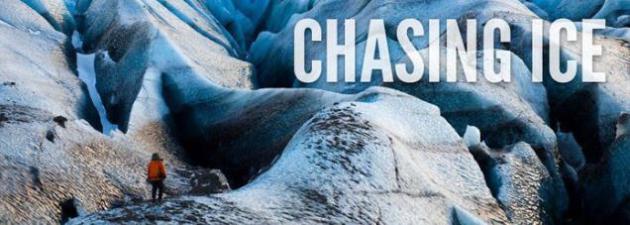
Amateur Tornado Chasing: Public Service or Menace?
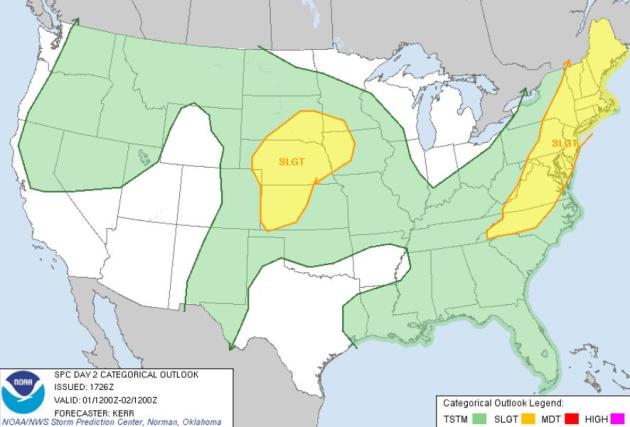
Severe Threat Tonight & Thursday for Minnesota.

Near 90 On Friday?

Wild Winds. The average wind speed on Tuesday was 19.1 mph at MSP, a peak wind of 45 mph. That's tropical storm force.
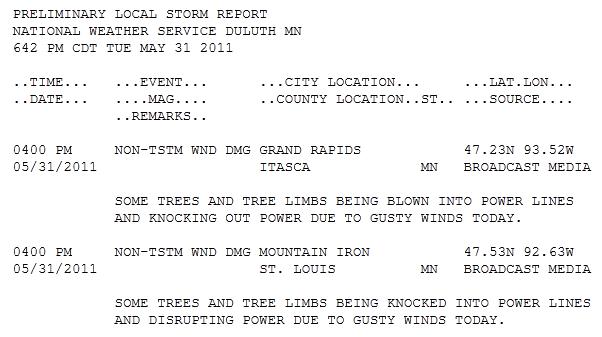

Wind Damage. High winds brought down trees and powerlines Sunday and Monday - the most extensive damage from near Breezy Point to Grand Rapids. A complete run-down of wind and hail-related damage from the NWS offices is here.
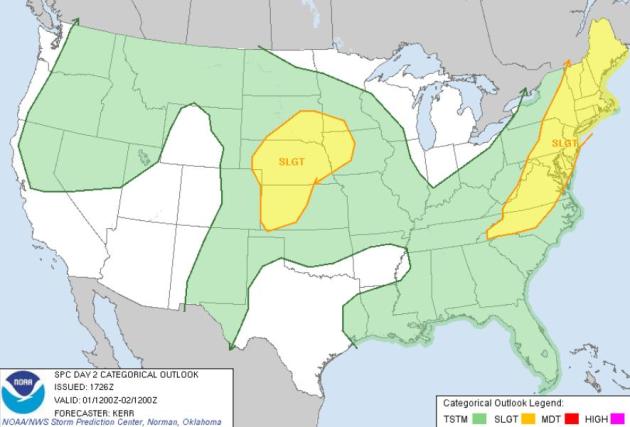
Another Severe Threat. The sun should be out much of today, clouds increasing during the PM hours, a good chance of T-storms late tonight into Thursday as another strong warm front surges north. A few storms over southwestern MN may exceed severe limits late tonight and early Thursday (58 mph wind gusts and/or 1" diameter hail). A few severe storms are possible in or near the Twin Cities Thursday afternoon into Thursday night as a 90-degree airmass approaches. Source: SPC.

Friday Hot Front. Latest models show Friday highs in the mid 80s to near 90, followed by slight cooling over the weekend, when highs will range from the mid 70s (north) to the low 80s (south).
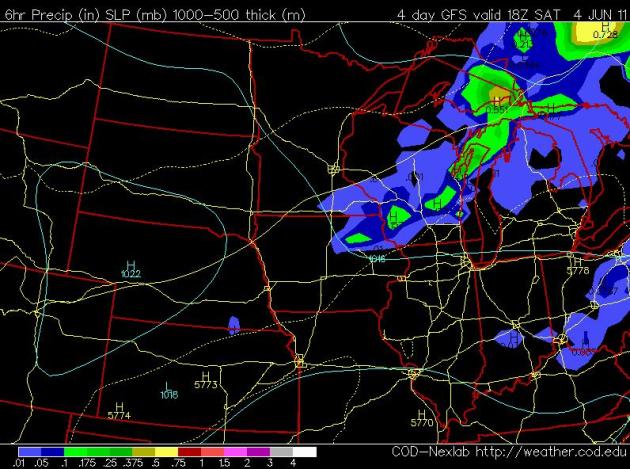
Saturday Preview. Models keep most of the state dry Saturday, with the exception of a few PM showers and possible T-storms over far southeastern counties. Highs should range from mid 70s (north) to low 80s south of the MSP metro. NAM model output valid 1 pm Saturday.

Stray PM T-Storm Sunday. Much of Sunday looks dry, but a weak disturbance in the upper atmosphere may fire off a few PM T-storms. Too early to try to get specific. Highs will be in the upper 70s to near 80. NAM map above valid 1 pm Sunday.
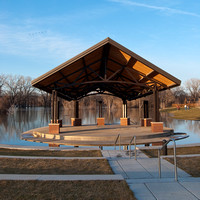
(Shakopee photo courtesy of kengillphotography.com).
BULLETIN - IMMEDIATE BROADCAST REQUESTED FLOOD WARNING NATIONAL WEATHER SERVICE TWIN CITIES/CHANHASSEN MN
...THE NATIONAL WEATHER SERVICE IN CHANHASSEN HAS ISSUED A FLOOD WARNING FOR THE FOLLOWING RIVERS IN MINNESOTA...MINNESOTA RIVER AT SHAKOPEE AFFECTING CARVER...HENNEPIN AND SCOTT COUNTIES
THIS RIVER FORECAST IS BASED ON OBSERVED PRECIPITATION OF A
QUARTER INCH UP TO A HALF INCH...OVER THE PAST 24 HOURS. ALSO
UPSTREAM AND DOWN STREAM GAGES, AND FORECAST PRECIPITATION
OVER THE NEXT 24 HOURS. DRIER WEATHER IS EXPECTED THE NEXT COUPLE
DAYS ACROSS THE MINNESOTA RIVER BASIN...FOLLOWED BY MORE HEAVY
RAINS LATE IN THE WEEK...THAT COULD CAUSE RIVER LEVELS TO RISE
EVEN HIGHER THAN CURRENTLY PREDICTED. THE NATIONAL WEATHER
SERVICE WILL MONITOR THIS DEVELOPING SITUATION AND ISSUE
FOLLOWUP STATEMENTS AS CONDITIONS OR FORECASTS CHANGE.
PRECAUTIONARY/PREPAREDNESS ACTIONS...
DO NOT DRIVE CARS THROUGH FLOODED AREAS. TURN AROUND...DON'T DROWN.
STAY TUNED TO NOAA WEATHER RADIO OR YOUR LOCAL RADIO OR TV STATION
FOR THE LATEST INFORMATION CONCERNING THIS FLOOD EVENT.

2011 Summer Outlook. Here is AccuWeather's summer outlook. I tend to agree (for the most part - a bias toward slightly cooler, wetter and stormier, with more severe storms than average, thanks to a jet stream blowing almost directly overhead for much of the next 60-90 days. More details: "The La Nina that has driven the extreme weather since winter is over, but the lingering effects mean no summer for the Great Lakes, drought conditions expanding out of the southern Plains, and flooding expanding into the Midwest from the Mississippi Valley. The end of the La Nina pattern will threaten to make this area a region "without a summer." Repeated intrusions of cool air from Canada along with showers and thunderstorms will keep temperatures below normal in many areas. Temperatures topping 90 F may be rare. The severe weather that has plagued the South this spring will shift northward. Frequent bouts of thunderstorms could mean numerous instances of flooding, hail and wind damage, even tornadoes. While we probably had the most extreme tornado activity of 2011 during April and May, the summer still has potential to bring a few moderate outbreaks of tornadoes. Flooding may be the biggest concern this summer, as already-soggy ground can handle only so much heavy rain."
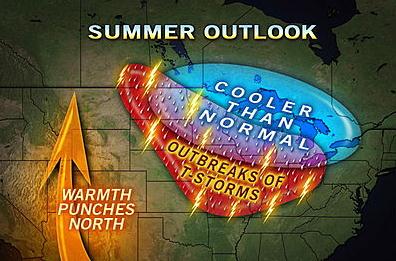
Stormier Than Average? I suspect AccuWeather has the right idea, with a forecast of more storms (severe and otherwise) than average this summer. Graphic courtesy of AccuWeather.
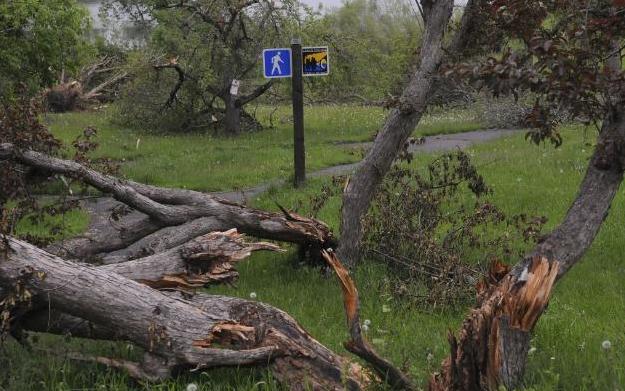

The Joplin Tornado: Six Miles Of Terror And Ruins. The register-herald.com has more details on the massive EF-5 tornado that swept through Joplin 9 days ago: "JOPLIN, Mo. — The eerie wail of warning sirens filled the warm, humid air at 5:20 p.m. Sunday, May 22, the day of Joplin High School’s graduation. Soon the sky faded from bright blue to green-gray, then to black, signaling a sense of imminent disaster. At 5:41 p.m. a monster tornado — described by a meterologist as “a fist coming out of the sky” — shattered the nervous calm that had enveloped Joplin, slowly crawling across the landscape at 20 mph with deadly force. For 20 minutes the twister chewed up one-third of this city of 50,000 like a giant dinosaur gone mad, obliterating homes, apartment buildings, businesses, churches, schools and one of the community’s two hospitals. The estimated toll: 8,000 structures, 300 businesses, 4,000 jobs, 1,150 injured and at least 142 lives lost. It was a cataclysmic day when the unthinkable happened. Those who survived remember what they were doing when the tornado struck. Here are their stories, mile-by-mile, along the path of destruction.
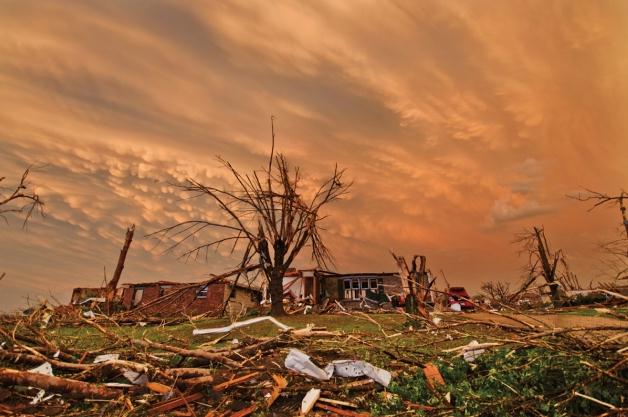
Are You Ready For More (Freak Storms?) Newsweek has the story: "Joplin, Mo., was prepared. The tornado warning system gave residents 24 minutes’ notice that a twister was bearing down on them. Doctors and nurses at St. John’s Regional Medical Center, who had practiced tornado drills for years, moved fast, getting patients away from windows, closing blinds, and activating emergency generators. And yet more than 130 people died in Joplin, including four people at St. John’s, where the tornado sucked up the roof and left the building in ruins, like much of the shattered city. Even those who deny the existence of global climate change are having trouble dismissing the evidence of the last year. In the U.S. alone, nearly 1,000 tornadoes have ripped across the heartland, killing more than 500 people and inflicting $9 billion in damage. The Midwest suffered the wettest April in 116 years, forcing the Mississippi to flood thousands of square miles, even as drought-plagued Texas suffered the driest month in a century. Worldwide, the litany of weather’s extremes has reached biblical proportions. The 2010 heat wave in Russia killed an estimated 15,000 people. Floods in Australia and Pakistan killed 2,000 and left large swaths of each country under water. A months-long drought in China has devastated millions of acres of farmland. And the temperature keeps rising: 2010 was the hottest year on earth since weather records began. From these and other extreme-weather events, one lesson is sinking in with terrifying certainty. The stable climate of the last 12,000 years is gone. Which means you haven’t seen anything yet. And we are not prepared."
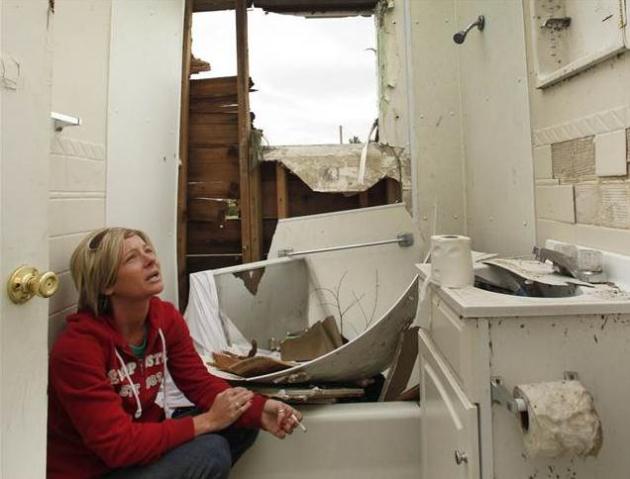
What Could Have Saved Joplin Lives? Basements. An estimated 10-20% of Americans have access to a basement or storm shelter - that's a big part of the challenge, especially if a large, violent (EF-4 or EF-5) tornado is moving in. Excavating a basement is cost-prohibitive across much of America, because of bedrock under the soil, or high water table levels. MSNBC has the story: "JOPLIN, Mo — Like a lot of other Joplin homeowners, Herndon Snider rode out the May 22 tornado in a bathtub. Other popular places to take cover from the vicious tornado were closets and center hallways. Such is the price people pay for living in communities such as Joplin where basements are rare due to rocky, wet soil. About 87 percent of homes in Joplin have no basements, according to the Jasper County assessor's office. The vulnerability of residents to injury or death in tornadoes for lack of a basement has drawn attention to the need for more storm shelters for individuals or large groups of people. "I'll bet there will be a lot of them built here," Snider said. The EF-5 tornado has been rated the deadliest single twister in the United States since 1947. The official death toll was 146 as of Tuesday. Joplin Fire Chief Mitch Randles saw first-hand what a tornado can do. The twister destroyed his house, which has no basement. Nobody was home at the time. "My wife told me we are never going to own a home without a basement or storm shelter," Randles said. Digging basements in most of Joplin is impractical and cost-prohibitive because of a high water table and limestone just below the surface, said John Knapp, professor of geophysics at Missouri Southern State University in Joplin."
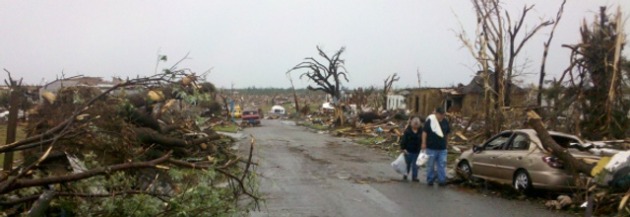
Environmental Dangers Lurking In Joplin Debris. KCCI-TV in Des Moines has the story: "Experts said environmental dangers could be lurking in the air, water and debris piles in Joplin, Mo., following last week's deadly tornado.Hazards range from liquid fuels and chemicals that may have leaked from ruptured containers to soot from smoky fires.Crews with the U.S. Environmental Protection Agency have been inspecting the devastated city. They say no major spills or other ecological crises have turned up, even though among the ruined structures are chemical suppliers, natural gas companies and paint manufacturers.Missouri officials have relaxed some environmental regulations to expedite the cleanup. The waivers allow limited burning of woody debris. Landfills can accept some types of waste that are normally off-limits.The tornado leveled much of the city and killed more than 130 people."
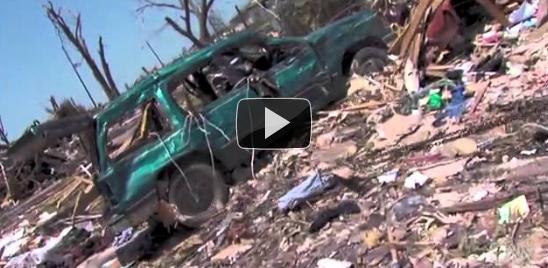
Elephant Helps With Tornado Clean-Up. Video News Feed and WFLA-AM radio report: "Elephants from the Picadilly Circus assist in the post-tornado cleanup in Joplin, Missouri, moving cars and other heavy debris."

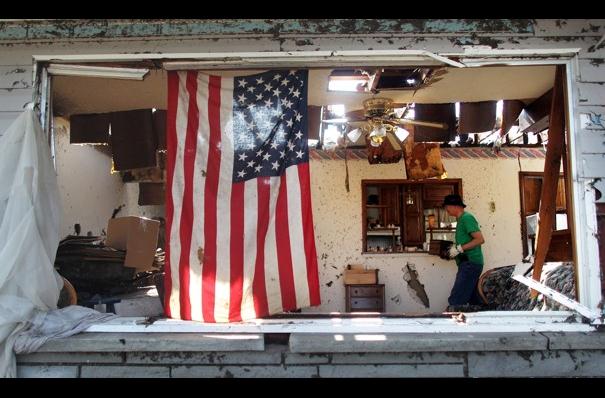

Tornado Survivor Captures Audio Of Walmart Destruction. Freight train? More like an angry fist from the sky punching the ground for 6 miles, a frightful wail of debris caught up in a shrieking, 200 mph blender. Ozarksfirst.com has the story:
"(Joplin, MO) -- A woman who survived the Joplin tornado says she's having a hard time getting the experience out of her mind.
Rosie Peterson was in the Walmart store on South Rangeline Road with her husband and two daughters, ages 2 and 4. She said at first she thought the warning to take cover was a joke until a store employee began yelling, insisting everyone run to the back. Rosie and her husband did run, crouching by a display of DVDs and covering their daughters with a towel. She says when the worst of the storm passed, they still had strong hail and fierce lightning. When she saw the debris, she hit record on her cell phone. At that moment her survival instinct kicked in, and she tossed the phone in her purse, not realizing it was still recording the sounds of shock and disbelief as people tried to crawl through the wreckage to get to safety."

Our Tornado Voyeurism Problem. Andrew Freedman from the Capital Weather Gang has an intriguing post about the problem with tornadoes - and amateur tornado chasers (who are taking video when they should be heading for the basement). But as long as local TV stations and The Weather Channel keep playing (and paying) these video clips, people will continue to take huge risks: "I find these, and many other recent tornado videos, highly disturbing. Now I don’t have any disdain for storm chasing, quite the opposite, in fact. I’ve tagged along on two major storm research projects, most recently two years ago when I wrote a series of stories for this blog and saw my first tornado – from a safe distance. But both times I was embedded with scientists who were conducting research aimed at improving tornado forecasts. The tornado outbreaks during the past two months have propelled another breed of storm chaser - the idiotic amateur - into the limelight, raising many questions and concerns in the process. While lives are being lost, many of the videos show amateur chasers cheering the unprecedented weather, too caught up in the thrill of witnessing Mother Nature at her rarest (and deadliest) to comprehend the decidedly grim reality of what is taking place. On Sunday night, the National Geographic Channel aired a hastily put together documentary on the record tornadoes that occurred during April, “Tornado Swarm 2011.” The documentary featured many of the viral videos, strung together with narration by actor Campbell Scott. Although this surely was not the producers’ intent, one thing became glaringly obvious by watching video after video of people recklessly ignoring tornado warnings and rushing to view tornadoes up close, while screaming phrases like “This is awesome!” and “I’ll never see anything like this again!” - this country has a growing tornado voyeurism problem, and it’s one which may lead many to learn the wrong lessons from the recent deadly scourge of twisters. Call it the “YouTube Effect.” While they are sure to frighten some into taking more tornado precautions next time, these videos will very likely breed more amateur chasers who will run to the car when they hear tornado sirens, rather than heading for the basement."
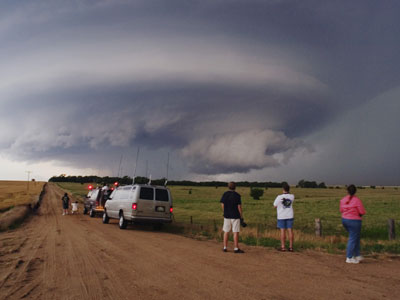
Tornado Chasing: On A Downward Spiral Or Providing Public Value? The Capital Weather Gang poses an important question in the Washington Post. One of these days (amateur) tornado chasers and thrill seekers will be killed by a tornado, or trigger a horrific traffic accident. There are just too many people chasing (for sport) vs. trying to collect data critial for scientists to dissect after the fact: "Tornado chasing, largely limited to a small cadre of research scientists, photographers, and thrill seekers in the 1970s into the early 1980s, has transformed into a large and growing industry. Everyone wants to catch a glimpse of the action and these swirling vortices are swarming the TV networks and cyberspace - from reality TV to documentaries to movies to You Tube videos. They’ve even spawned a cottage tourism trade where you can fly to the Midwest and ride along with “expert” chasers. Earlier today, Andrew Freedman wrote about “Our Tornado Voyeurism Problem” - i.e. our obsession with viewing these violent storms, potentially putting ourselves and even others in harms way. Andrew featured some of the scathing commentary about the recent direction of tornado chasing from research meteorologist and pioneering tornado chaser Charles Doswell. But there is another point of view on proliferation of storm chasers...A couple weeks ago, I caught up with WeatherData CEO Mike Smith and author of “Warnings: The true story of how science tamed the weather”. For all of the criticism leveled at the flourishing chasing industry, Smith hasn’t soured on it like Doswell. “I believe it is a significant net benefit to society in general and the Great Plains in particular,” he said. “The storm chasing shows and, especially, the storm chase tour companies, I think ... give people an appreciation for the power and majesty of our atmosphere.
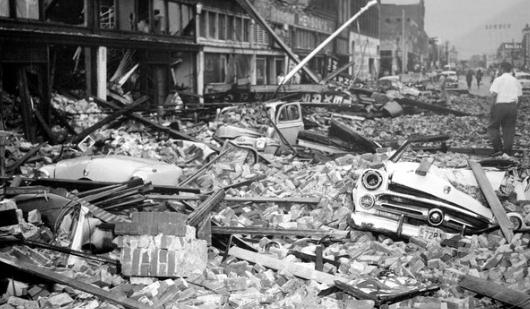
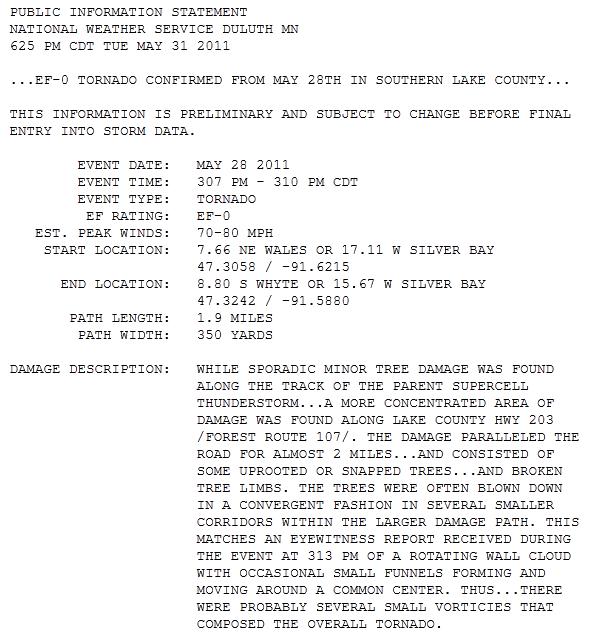
North Shore Tornado? The Duluth office of the NWS confirms a weak, EF-0 tornado on May 28 near Silber Bay. Winds may have reached 80 mph, a damage swath of nearly 2 miles of uprooted and snapped trees. Lake county may be Minnesota's safest counties, in terms of tornado risk - consistently cool winds blowing off Lake Superior are a deterent to supercell formation - making tornadoes between Duluth and Grand Marais very, very rare. That makes the May 28 tornado all that more unusual.
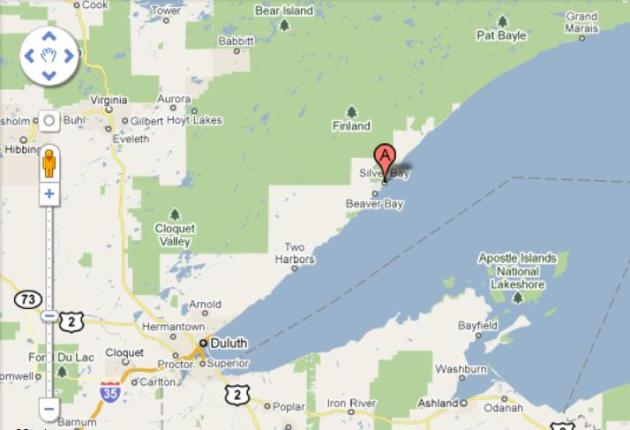

Our Take: On Hurricane Season. An update from the Orlando Sentinel on one of the few weather phenomenon we don't have to worry about here in Minnesota: "Images from recent deadly tornadoes in the Midwest are truly heartbreaking — but they should serve as a timely reminder for Floridians. The people in Missouri and Oklahoma and elsewhere didn't get a lot of warning before the killer tornadoes came roaring through. People have no time to get their homes properly protected and little time to be sure all family members are in a safe place. Not time to really do anything except hope you are not in the twister's path. A horrible tragedy, for way too many families. And a reminder that with the opening of hurricane season just ahead, we have the good fortune of time to properly prepare for what could happen. To an extent, we actually have months to prepare, since the peak of hurricane season isn't normally until the middle of August. If a storm heads our way, there are still usually days to prepare, particularly with the excellent forecasting accuracy for location and strength that we've seen in recent years."

Tropical Storm Potential. Today marks the official kick-off of hurricane season, and right on cue, an area of disturbed weather is showing up off the southeast USA coast. Click here to see the latest satellite loop and forecast track from the Weather Underground.

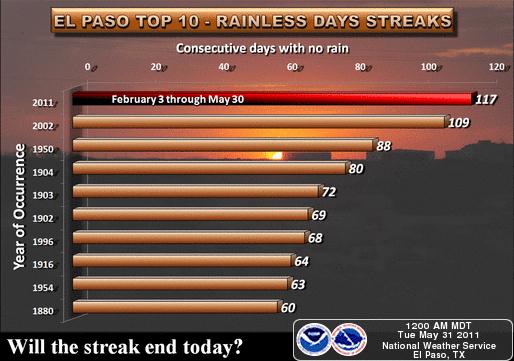
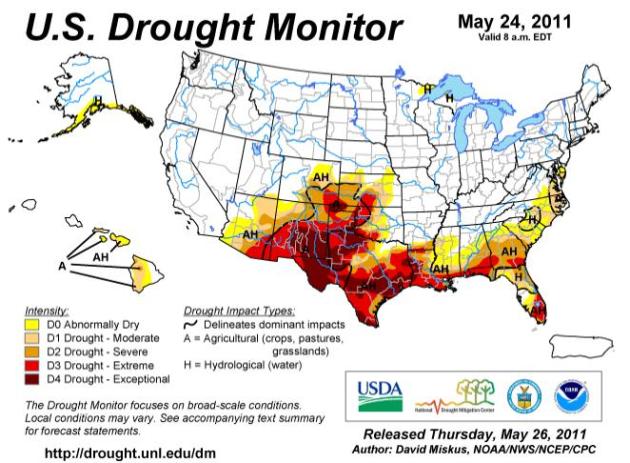
Expanding Drought. An "exceptional" drought is underway now across much of the Gulf coast - spreading westward into New Mexico, Colorado and Arizona. More from NOAA's Drought Monitor here.

Experts Say Cell Phones Are Possibly Carcinogenic To Humans, Classify In Same Category As DDT. Great, just what I wanted to hear. Let me put my cell phone down and read this carefully. The Star Tribune has the details: "LONDON - A respected international panel of experts says cellphones are possible cancer-causing agents, putting them in the same category as the pesticide DDT, gasoline engine exhaust and coffee. The classification was issued Tuesday in Lyon, France, by the International Agency for Research on Cancer after a review of dozens of published studies. The agency is an arm of the World Health Organization and its assessment now goes to WHO and national health agencies for possible guidance on cellphone use. Classifying agents as "possibly carcinogenic" doesn't mean they automatically cause cancer and some experts said the ruling shouldn't change people's cellphone habits. "Anything is a possible carcinogen," said Donald Berry, a professor of biostatistics at the M.D. Anderson Cancer Center at the University of Texas. He was not linked to the WHO cancer group. "This is not something I worry about and it will not in any way change how I use my cellphone," he said — from his cellphone. After a week-long meeting, the expert panel said there was limited evidence cellphone use was linked to two types of brain tumors and inadequate evidence to draw conclusions for other cancers.


Blustery Tuesday. A tight pressure gradient whipped up 50 mph+ wind gusts across Minnesota yesterday. Highs ranged from 61 at Alexandria (1.41" rain) to 67 at St. Cloud, 73 in the Twin Cities (where only .02" rain fell).

Paul's SC Times Outlook for St. Cloud and all of central Minnesota:
TODAY: Sunny start (less wind). High clouds increase by late afternoon/evening. Winds: W 10-15. High : 71
WDNESDAY NIGHT: Partly cloudy - chance of T-storms late (a few may be severe over southwestern MN). Low: 58
THURSDAY: Sticky, few strong/severe T-storms possible. High: 75
FRIDAY: Hot sun, get to the lake - fast! Low: 65. High: 87
SATURDAY: Mix of clouds and sun, a bit cooler, but still pleasant. Low: 61. High: 79
SUNDAY: Sunny start, stray PM T-shower? Low: 60. High: 77
MONDAY: Intervals of sun, still summerlike. Low: 64. High: 82
TUESDAY: Clouds increase, nighttime storms possible. Low: 63. High: 81

Weather Slang
Partly cloudy means the same thing as partly sunny, right? Nope. A forecast of partly sunny implies more clouds than sun; while partly cloudy implies the sun will be out most of the day. Confusing? You bet. Probability of precipitation is another pet peeve. A 30% probability of showers doesn't mean it will rain 30% of the time, or 30% of us will get wet. It means that, on 3 out of 10 days with similar conditions, one location will pick up .01" rain or more. Say what? Just communicating the weather, choosing the right descriptive words, can be challenging.
Get ready for a big serving of severe-clear today, enough lukewarm sun for mid 70s. Expect a better hair day, winds under 15 mph. Soak up the blue sky, because the approach of a hot front will ignite more T-storms Thursday; a tiny percentage may turn severe. Friday will feel like July: 80s likely, with an outside shot at 90 from the MSP metro on south. A west/northwest breeze cools us off a few degrees Saturday, but expect a lake-worth day with highs in the 70s (north) to low 80s (south). A stray T-shower may sprout Sunday, but much of the weekend will be dry; suitable for shorts & T-shirts. No frost. No tornadoes. Whew..
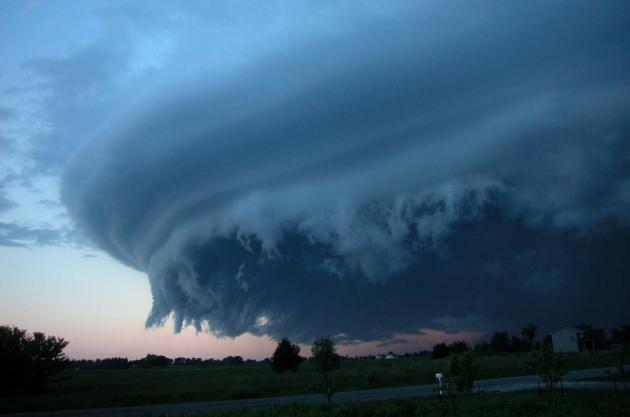
Climate Truthers: Why Global Warming Deniers Are Conspiracy Theorists, Not Rational Skeptics. Stubborn skepticism in the face of overwhelming science is not a virtue - it's the celebration of ignorance, and let's call it what it is - denial. Sahil Kapur explains in Huffington Post: "The United States is experiencing a golden era of conspiracy theories. From the 9/11 Truthers to the Obama Birthers to the Trig Birthers and, most recently, the bin Laden Deathers, alternate theories of reality are alive and thriving on the American fringes, perhaps more so than ever in the age of digital media. One group of conspiracy theorists, however, has escaped the label -- and has even succeeded in bringing its theory into the mainstream. These are the people who deny that human activity is contributing to climate change, despite enormous evidence to the contrary -- call them the Climate Truthers, for lack of a better term. First the facts: the American and international scientific community overwhelmingly agree that carbon dioxide emissions are triggering a slate of harmful effects on the planet. "Climate change is occurring, is very likely caused primarily by the emission of greenhouse gases from human activities, and poses significant risks for a range of human and natural systems," declares a recent report by the U.S. National Academy of Sciences. The fact that a small percentage of scientists disagree -- which is also the case with, say, evolution -- doesn't mean the issue isn't settled. Yet unlike their counterparts, Climate Truthers aren't merely an irrelevant group of rabble-rousers -- on the contrary, the scientific consensus is denied by the leaders of one of America's two great political parties, as well as the majority of its ideological base. Speaker John Boehner, the most powerful Republican in the country, considers the notion that carbon emissions are harming the planet "comical." In recent years, this viewpoint has become something of a GOP litmus test, and today it's difficult to find Republicans who accept the scientific consensus."
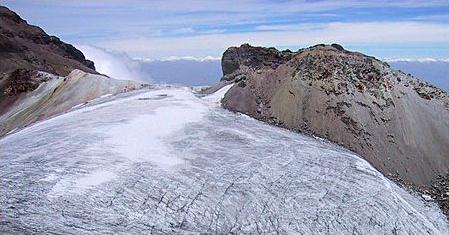

...Progress has also been made on ruling out other possible causes of warming, such as changes in the amount of solar radiation reaching the earth. Scientists have identified ‘fingerprints’ of warming that confirm human influence. A primary example is the pattern of warming in the layers of the atmosphere. Under increased greenhouse gas scenarios, climate models predict that the lowest layer of the atmosphere (the troposphere) should warm, while the next layer up (the stratosphere) should cool. This has been confirmed by recent observation. If increased output from the sun were the cause, both layers could be expected to warm."


Melting Ice Has Its Downside For Canada. The article from marketwatch.com: "PORT TOWNSEND, Wash. (MarketWatch) — The famed “Ice Road Truckers” might become the Muddy Road Muckers if a new climate-prediction study that looks at the future of Canada’s melting permafrost is right. And forget the Northwest Passage, at least for now. But new far-north shipping routes opening up might well take up the slack. We’ve heard a lot the past couple of years about how climate change/global warming might open up northern Canada to farming and increased shipping. Not much about the downside. A trio of geographers at UCLA have released a study published in the journal “Nature Climate Change” saying that in the next 50 years, many of those ice roads you may have seen on the popular History Channel series will be impassable as the permafrost melts (one memorable episode featured a driver apparently risking his life to haul a truckload of salty snacks over frozen lakes to oil drillers). Global warming over the next 40 years “will cut through Arctic transportation networks like a double-edged sword, limiting access in certain areas and vastly increasing it in others,” the UCLA study predicts. “As sea ice continues to melt, accessibility by sea will increase, but the viability of an important network of roads that depend on freezing temperatures is threatened by a warming climate,” said the UCLA researchers. Read the UCLA study on the impact of global warming on Canada’s transportation. If these scientific predictions hold true, it could have major implications, not just to remote villages that will become unreachable except by air, but also to industry. The study says implications could be “profoundly negative” for mining, energy and timber operations that now depend on winter ice roads."

Discouraging News. In a recent national study by the Yale Project on Climate Change Communication researchers investigated American teen middle and high school students knowledge of how the climate system works, and the causes, impacts, and solutions to global warming. Using a straight grading scale 54 percent of teens received a failing grade compared to 46 percent of adults.
Broken up into three parts, Understanding of Climate Change, Knowledge Gaps, and Common Misconceptions, a wide array of information was discovered.
- 54% of teens say that global warming is happening, compared to 63% of adults.
- 57% of teens understand that global warming is caused mostly by human activities compared to 50% of adults.
- 17% of teens have heard of coral bleaching.
- 35% of teens believe that the hole in the ozone layer is a large contributor to global warming.
“American teens recognize their limited understanding of the issue. Fewer than 1 in 5 say they are “very well informed” about how the climate system works or the different causes, consequences or potential solutions to global warming, and only 27 percent say they have learned “a lot” about global warming in school. Importantly, 70 percent of teens say they would like to know more about global warming.“ (source: Scott Mandia).
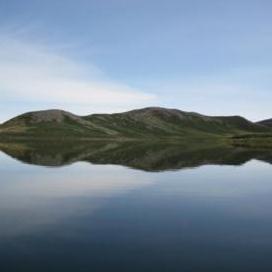
No comments:
Post a Comment